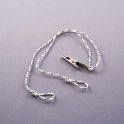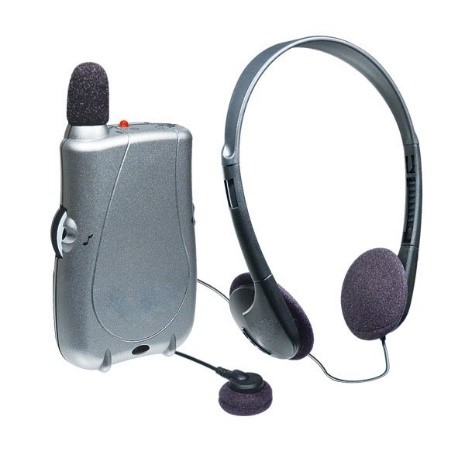BATTERIES AND ACCESSORIES
Hearing aid batteries
Hearing aids, due to their very nature, consume a lot of energy. They contain amplifiers, microphones, receptors and computers. Don’t be surprised if you must replace their batteries frequently. On average, you should replace the batteries once per week. However, some hearing aids that are equipped with larger batteries have a battery life of up to 3 weeks.
Contact one of our audioprosthetists to find out which battery is best for your device and learn more about our Advantage+ Program.
Zinc air batteries
All of the hearing aids on the market use zinc air batteries as their energy source. These affordable batteries have a storage life of approximately 3 years. They operate through a chemical reaction that occurs when ambient air comes into contact with the zinc contained in the battery. You activate the batteries by removing a small sticker located on the positive side of the battery.
Here are a few recommendations about zinc air batteries:
- Ensure that your hands are clean and dry before handling the batteries.
- Never leave batteries in a hearing aid that is not being used.
- Wait at least 30 seconds before turning on your hearing aid after changing the battery. Extra time is necessary to allow air to enter into the battery.
- Store zinc air batteries at room temperature in a dry place. Avoid storing batteries in the refrigerator or freezer.
- Never carry batteries in your pockets. If they come into contact with change, they will completely discharge.
- Get your hearing aids cleaned regularly by your audioprosthetist. Regular maintenance includes cleaning of the battery cell contacts. Keep your hearing aids dry and use a dehumidifying container or an electrical drying station if needed.
How to identify zinc air batteries
While zinc air batteries have different names, the battery number and its sticker colour are the only pieces of information you need. Here are the zinc air battery numbers and the colour of their packaging and stickers, from the largest to the smallest:
 675 — BLUE
675 — BLUE
13 — ORANGE
312 — BROWN
10 — YELLOW
Rechargeable hearing aid batteries
Some hearing aids are designed to function with rechargeable batteries. This technology has the advantage of requiring fewer batteries since they must only be replaced once per year. However, don't forget to recharge the battery every night; otherwise you won't be able to use your hearing aid in the morning.
ACCESSORIES
In addition to hearing aids, many other devices exist to help you hear better. Contact one of our audioprosthetists for more information about them or to make a purchase.
Technical support
FM systems
Frequency modulation systems are used to help increase understanding of speech in large or noisy places. They are mainly used in classrooms to help hearing-impaired students, but they can also be used in many other types of listening situations.
Frequency modulation systems include two basic components - the transmitter and the receiver - in addition to transmission or reception accessories such as tie-clip microphones, table microphones, input shoes and magnetic loops.

Wireless TV audio transmission system
Wireless TV audio systems come in two types: independent and dependent. They are referred to as “independent” when they don’t require the use of hearing aids, and “dependent” when they're used together with hearing aids.
The transmitter receives sound from the television and transmits it by radio frequency to the receiving device that you wear. Sound is therefore transmitted without echoing or ambient noise, directly into your ears. This creates a more enjoyable listening experience.

In the case of dependent systems, the audio signal is transmitted directly to your hearing aids by radio frequency. This type of system is efficient and easy to use. It is sometimes provided at no additional cost with the purchase of compatible hearing aids. Contact one of our audioprosthetists for more information.

Personal amplifier
Personal amplifiers are similar to portable music players that allow you to increase sound volume. They can be useful when speaking to a hearing-impaired person who is not wearing hearing aids. Personal amplifiers are not a substitute for hearing aids as they are only used on a temporary basis.
Telephone adaptation
Three types of telephone adaptors are available: telephone amplifiers, amplified telephones and adapted telephones with simultaneous wireless transmission.
-
Telephone amplifier
Telephone amplifiers come in the form of a small box that is connected to a standard home phone. They require a separate battery. Telephone amplifiers are easy to use and affordable.
-
Amplified telephone
An amplified telephone is a normal phone with an adjustable amplifier incorporated into it. It allows you to increase sound volume as well as the telephone ring volume. It is a more complete product, but it costs more than a simple telephone amplifier.
-
Adapted telephone with simultaneous wireless transmission
Adapted telephones with simultaneous wireless transmission are specifically designed for use with compatible hearing aids. They look just like a regular phone, but they transmit sound simultaneously in two ways: by acoustic coupling or by short-range radio frequency. When you're not wearing hearing aids, it works like a regular phone. However, if you're using hearing aids, it transmits the telephone conversation directly to each of your hearing aids at the same time.
Using this advanced technology eliminates all chances of disagreeable whistling and optimizes speech reception. It is the ultimate telephone device for the hearing-impaired.
This type of telephone can sometimes be provided at no additional cost with the purchase of certain hearing aids. Contact one of our audioprosthetists for more information.
Specialized ear plugs
Several types of ear plugs exist for a wide range of purposes (Bluetooth devices, musicians earplugs,swimming and sleeping plugs). Contact one of our audioprosthetists for advice on the best customized ear plug for you.
Bluetooth interface for hearing aids
For daily life, a range of electronic devices are available that use the Bluetooth protocol. You can easily continue enjoying using your cellphone, tablet and other state-of-the-art technology by using a Bluetooth device that is compatible with your hearing aid.
This type of accessory is sometimes provided at no additional charge with the purchase of your hearing aid. Contact one of our audioprosthetists for more information.


Other
Telephone cushions
If your hearing aid makes whistling sounds when using the phone, you can use a cushion designed specifically for telephones. It is a simple and affordable option.

Hearing aid retention cord
Losing hearing aids is unfortunately a common occurrence, especially with children and people in the hospital. To avoid this frustrating situation, you can attach your hearing aid to your clothes using a clip and cord system designed for this purpose.








